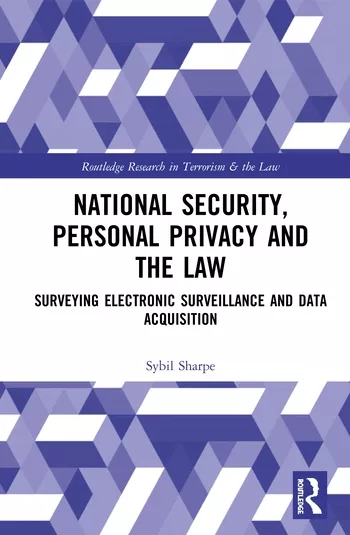The threat of phishing attacks and law enforcement’s role (Part 2)

Cytonn Photography via Unsplash
This is the second part of a previously published article. Find the first part here.
Law enforcement’s role in combatting phishing
While phishing may begin with a deceptive email or text message, its consequences can ripple far beyond individual inboxes — affecting businesses, economies, and even national security. As phishing attacks continue to grow in scale and sophistication, law enforcement agencies are on the front lines, working to prevent, investigate, and prosecute these crimes.
However, the borderless and anonymous nature of cybercrime presents unique challenges. Phishing schemes often span multiple jurisdictions, operate across various platforms, and are fueled by rapidly evolving technology. To keep pace, law enforcement must adopt a multifaceted and collaborative approach, integrating advanced investigative tools, cross-sector partnerships, and forward-leaning policy.
1. Strengthening cybercrime units and digital forensics
To effectively combat phishing, law enforcement agencies must invest in specialized cybercrime units equipped with digital forensics capabilities. These teams analyze malicious code, trace digital footprints and identify threat actors behind phishing campaigns. Given that many phishing operations originate from abroad, successful investigations often require global coordination, such as working with INTERPOL or foreign counterparts to track down perpetrators.
2. Building public-private partnerships
No single entity can tackle phishing alone. Law enforcement must collaborate with financial institutions, technology companies, and cybersecurity firms to share intelligence, identify emerging trends, and mitigate ongoing threats. These partnerships are critical for actions such as blocking malicious domains, alerting victims and disrupting phishing infrastructure before it causes widespread harm.
An example of this is the Secret Service FBI’s work with private-sector partners through its Cyber Fraud Task Force (CFTF) located across the country. CFTF’s facilitate information sharing between law enforcement and critical infrastructure operators to preempt cyber threats.
3. Updating legislation and enforcing policy
Modern cybercrime requires modern laws. Governments must continually update legal frameworks to keep up with evolving phishing tactics and close jurisdictional loopholes. This includes:
- Enhancing penalties for cybercriminals,
- Strengthening extradition treaties, and
- Developing cross-border cooperation agreements.
In the U.S., the Computer Fraud and Abuse Act (CFAA) and various cybercrime statutes have been instrumental in prosecuting phishing-related offenses, though ongoing reform is necessary to better align legal tools with the threat landscape.
4. Conducting takedown operations
One of the most visible — and effective — actions law enforcement can take is the takedown of phishing infrastructure. Working with domain registrars, hosting services, and internet service providers (ISPs), authorities can seize control of fraudulent websites and servers used to execute phishing attacks. These coordinated efforts can significantly disrupt phishing campaigns, especially when done swiftly after discovery.
Operations such as Europol’s “Operation HAECHI” and the Secret Services regular BEC takedowns demonstrate how law enforcement can cripple cybercrime networks and restore trust in online ecosystems.
5. Enhancing victim support and reporting mechanisms
Law enforcement’s role doesn’t end with investigation—it also includes supporting victims and encouraging incident reporting. Many phishing attacks go unreported, which limits visibility into emerging threats and hampers proactive intervention. Agencies must continue to educate the public on how to recognize phishing and where to report it — such as the FBI’s Internet Crime Complaint Center (IC3) or Europol’s online crime portals.
As phishing tactics continue to evolve, so must the strategies used to combat them. Law enforcement agencies around the world are stepping up, but they cannot do it alone. A successful defense against phishing requires a unified effort across government, industry, and the public, underpinned by innovation, education, and collaboration.
The urgent need for cyber education
While law enforcement efforts are vital, education remains the most effective defense against phishing. Organizations, employees, and everyday internet users must be equipped with the knowledge to identify and avoid phishing attempts. Key educational initiatives include:
- Workplace cybersecurity training: Companies should implement regular phishing awareness training for employees, including simulated phishing tests to gauge their ability to recognize attacks.
- Public awareness campaigns: Government agencies and cybersecurity organizations should launch awareness programs highlighting common phishing tactics and prevention strategies.
- Multi-factor authentication (MFA) adoption: Encouraging widespread adoption of MFA adds an additional layer of security, making it harder for attackers to access accounts even if they obtain login credentials.
- Critical thinking & verification: Individuals must be taught to verify email sources, avoid clicking unknown links, and contact organizations directly when in doubt about a suspicious request.
The continued threat of phishing attacks
Phishing attacks continue to be a growing cybersecurity threat with widespread financial, reputational and national security implications. While law enforcement agencies play a critical role in investigating and dismantling phishing networks, proactive cyber education and awareness are the most effective tools in preventing future attacks. Governments, businesses and individuals must work together to create a safer digital environment by staying informed, remaining vigilant and implementing strong cybersecurity practices.
Looking for a reprint of this article?
From high-res PDFs to custom plaques, order your copy today!









